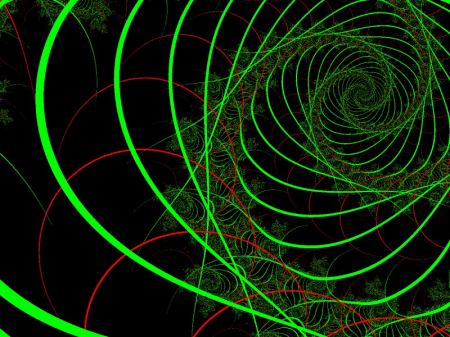
I have now completed my first week of ballet classes. It was a short week since it began on Tuesday. I noticed that my changed schedule was taking a good amount of my energy. I decided to slow my treadmilling speed a bit and concentrate on good balance as I walked on it.

I benefit greatly from eavesdropping on ballet teachers’ instructions to aspiring dancers. They understand how the body is constructed in the same way that the Alexander technique talks abut it. In some cases this connection is explicit as the teachers have actually studied the technique.

I love to hear them talk about the skeletal design of the body and how to let the body function the way it is setup to.
I was noticing that my walk seems to be changing.

A year ago I noticed that my habitual step causes my feet to point a bit to the outside of the step. I knew this was not right. But Alexander cautions against “correcting” something like this. Instead he tries to teach “inhibition.”
I see the same thing functioning when Amanda (one of the excellent ballet teachers) shows a student how to hold their body with more ease. She touches them the same way an Alexander Technique touches as she talks to the student and at the same time the whole class.
She knows the skeletal/muscular structure of the body in a frighteningly thorough way.

from http://www.irithlanger.com/
Amanda uses the “inhibition” type idea of being careful to “let” stuff happen with the body. In other words to stop or inhibit the wrong direction to the body. Very very cool. And very helpful.
Recently I have been wondering if my trending higher blood pressure (which has subsided, probably temporarily) was related to the great amount of stress in my life. Briefly this stress comes from contact with other people who are out of control and some of whom I care deeply about.
Amanda talked about anxiety this week with her usual metaphors. “Own it!” She says. “Know when it is happening to you.” She teaches students to “holster” or “pocket” the anxiety in the middle of dance for later consideration.

These two approaches to stress and anxiety may possibly be working for me as well. Concentrating on a balanced slower walk in my treadmilling is coinciding with a drop in my blood pressure. Are the two related? Probably, but in the way of the body in a complex way that is pretty hard to isolate from other factors.

I can see that pacing myself is going to be an important part of my approach to life this Fall. I have been telling people at my church (the boss, the musical teenager who bothered to show up for pizza and to help me the other night) that my job is to stop myself from making my part time job a full time one.
Since I am pretty dedicated to excellence there are parts of my work where I will not compromise (like execution and preparation of my playing and training of singers). In the other parts, I have identified “dead ends” that I need to avoid.
All of this seems related: the physical balance of the body and the psychological balance of the soul. I think we sometimes parse out things that are bits of the same whole: body, mind, soul, emotion.

********************************************************************

Reappraisals by Tony Judt is a collection of essays by this excellent writer. This morning I finished his essay on Hannah Arendt. (available to New York Review of Books subscribers here…. this doesn’t include me. I own the book pictured).
I read Arendt’s Eichman in Jerusalem: A Report on the Banality of Evil as a young man. It has colored my thinking ever since as I have watched society become mired in banality.
Arendt proposes that the evil that was done by German Nazis was often done by people like Eichmann who were just doing their insidiously boring and nondescript job.
It is an indictment of the normality and invisibility of truly terrible things that humans do. Torture in the 21st century comes to my mind as a possible example.
Here’s a link to a complete online essay I plan to look over about this:
The ‘Problem of Evil’ in Postwar Europe by Tony Judt | The New York Review of Books
*****************************************************************
Haruki Murakami: “Town of Cats” : The New Yorker
I also read this short story yesterday. I am a fan of Murakami and have read several of his novels and collections of short stories. This story about the weird relationship between an adult son and his addled father did disappointment me.
*********************************************************************
Researchers Find Antibiotic Resistance in Ancient DNA – NYTimes.com
This is the first example of finding modern medical type antibiotics outside of the lab. Implications are described in the article.
**********************************************************************
Not that you asked, but let me suggest that you try this: turn your feet so that both are pointing forward (the direction they’re supposed to point). Next, observe the direction your knees are pointing. When I do this my knees are pointing inward toward one another. This is, most likely, due to the birth defect I have with my ankle. When I learned to walk, because my ankle wouldn’t work right, I unconsciously turned my feet outward in order to achieve balance and not to fall over. I never noticed the way this shows up in my knees (my legs grew in such a way as to be twisted – maintaining balance while fitting correctly into my hip sockets). The only effect this had on me when I was younger was that I, too, walked with one foot sticking out. As I grow older, I find my ankle (particularly the right one) grows weaker, that I have hip pain and that my back hurts more and more. My gut says that all of this is interrelated. FWIW… I went to an orthopedic specialist and she prescribed orthotics that were not covered by my health insurance and would have cost me over $300. I ended up going with an expensive orthotic insole ($50 … has to be replaced a number of times a year, even when I buy a different set for different shoes and don’t wear them all the time). These seem to make it possible for me to walk without a huge amount of pain. But even then I wake up on Monday’s with an extremely painful ankle, a somewhat painful hip and a stiff back. Getting old is so much fun.
M
Yikes! You have mentioned this to me before. Sorry it causes you so much physical pain! I seemed to have lucked out so far with aches and pain suffering only creaky morning stiffness. I too have the insoles (as I mentioned to you recently). I didn’t mention them in the blog, but I do credit them with improvement in my walk and especially the ebbing of foot pain.
Is this the same notion that voice teachers use, of concentrating the “effort” of singing on avoiding tension, staying out of the way of the voice, etc…?
I do think there is a relationship between the way voice teachers (and choral conductors) use imagery to teach indirectly and the way I understand the inhibition suggestions Alexander Technique recommends. Simply telling a singer to “relax” often has the opposite effect.
Nice blog. Please give reference though when using pictures from other sites, such as mine 😉 Greets from the webmaster of irithlanger.com